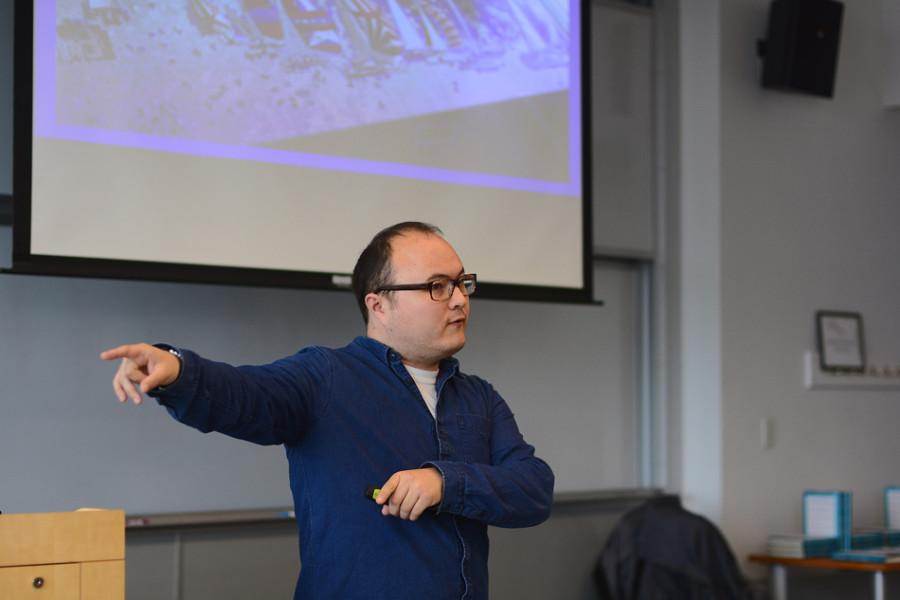Author, alumnus Ben Parr discusses getting people’s attention
Northwestern alum Ben Parr explains the science behind getting people’s attention in an event at the McCormick Foundation Center. Parr introduced his new book “Captivology” during the event as part of Entrepreneur and Innovators at NU speaker series hosted by the Farley Center for Entrepreneurship and Innovation.
April 22, 2015
Sending people a message about yourself can sometimes come down to the colors you wear, said author Ben Parr on Wednesday.
Parr (Weinberg ’08), former editor of Mashable, visited Northwestern to talk about his recently published book “Captivology,” which describes the science behind getting people’s attention.
“Attention has become the currency of the modern economy,” he said during the event.
Parr’s visit was part of the Farley Center for Entrepreneurship and Innovation’s Entrepreneur and Innovators at NU speaker series. In the past, the event has been a day-long conference with multiple speakers, but this year organizers wanted to make it a speaker series to appeal to a larger audience, said Caitlin Smith (Medill ‘09), assistant director of the Farley Center.
Parr’s talk stood out from some of the others in that he is an NU alum and was therefore able to engage with his audience well, she said.
Parr told a crowd of more than 30 people how, with all the new information people are receiving everyday, it is difficult to manage everything. That is why it’s difficult for people to get their ideas and products noticed.
“I feel like Doug the dog (from the movie “Up”), always distracted by so many things happening all the time, sometimes unable to focus,” he said. “I’m sure all of you feel the same way too.”
The three different types of attention Parr outlined were immediate attention, “the spark” that occurs when something shocks you; short attention, “the kindling” that occurs when someone consciously focuses their attention on something; and long attention — “the logs” for a fire — a long-term interest in something that can last for months.
“It’s not enough to have somebody listen to your ad or hear your song, you need to turn them to fans, to customers, to users, into followers,” he said. “You can’t skip over to the logs, you have to go through those three stages in order to capture attention.”
One of the captivation “triggers” he emphasized was acknowledgement, and said giving someone positive attention can capture people’s attention.
To describe the concept, Parr described a psychology study in which women holding hands with their husband, holding hands with a stranger and not holding anyone were given a shock from electrodes. When asked to rate their pain, the women holding their husband’s hand showed less pain.
“That was new for me,” Taniesha Robinson (Medill ‘10, ‘11), a digital media specialist at the Farley Center, told The Daily. “I had never associated that with attention, that your connection with the person can actually be stronger than a physical pain that you’re experiencing and how do you create that as a business. That was probably the most interesting point.”
Robinson said Parr’s talk was particularly relevant because students are being innovative, but they have to learn to capture people’s attention.
“I hope that students paid attention to his point about the fact that not all attention is good attention, that there’s positive and negative attention and the ultimate way to get positive attention is to focus the attention on your idea and not how cool your company is,” she said.
Email: [email protected]


